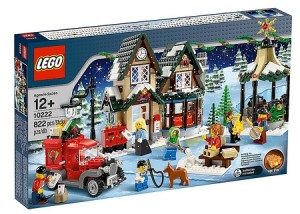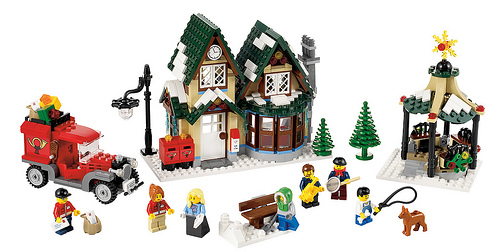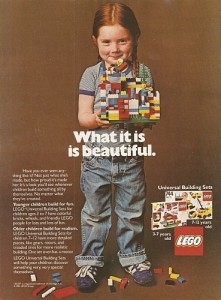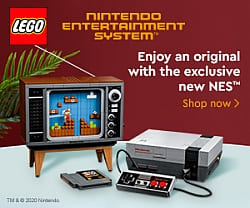Celebrate the newest LEGO Exclusive set, #10222 Winter Village Post Office, by designing your very own LEGO postage-stamp! 😀
This is a new and exciting LEGO contest by the LEGO Group! They invite children ages 6 & up to submit an idea for a LEGO holiday themed postage-stamp. Designs can be photographs of LEGO brick creations, scenes featuring LEGO minifigures, hand drawings, computer generated, or whatever you can imagine! 😛

➡ RULES: Your LEGO contest entry for this challenge must only fit the required size and be your own original design, reflecting what the holiday season means to you. Households may submit multiple entries; however, each individual person is limited to one entry only. Creations must be designed by entrant only.
Entries will be divided into two age groups; 6-14 and 15 and up. Entrants under the age of 18 must have their entries submitted on their behalf by a parent or legal guardian who is at least 21 years old.
Read the detailed rules here: LEGO Contest Rules

➡ DATE: The contest begins on September 1st, 2011. Entries must be received by September 30th, 2011.
➡ PRIZES: Yes, there are awesome prizes! 50 finalists in the contest will receive the #10222 Winter Willage Post Office LEGO set! The Grand Prize winner will have their design featured on the cover of the November 2011 LEGO Catalog, and will also receive a framed LEGO mosaic creation of their stamp, built by an official LEGO Master Builder!
➡ HOW TO ENTER: If you would like to enter go to the LEGO Design Challenge website and follow the on-screen instructions to download the entry-form and stamp-template as a PDF file. (There is also another PDF file with Frequently Asked Questions, you might want to check out.) Once you’ve completed your design and filled out the entry form, they must be sent via email to Design Challenge Entry.
Pretty fun little LEGO contest, isn’t it? Let me know if you are planning to enter! You may also want to check out Tips for Winning a LEGO Contest! 😉
Also, don’t forget; there are still a few days left to enter the Eurobricks Western Contest and MocOlympics is starting in a couple of days! 😛















